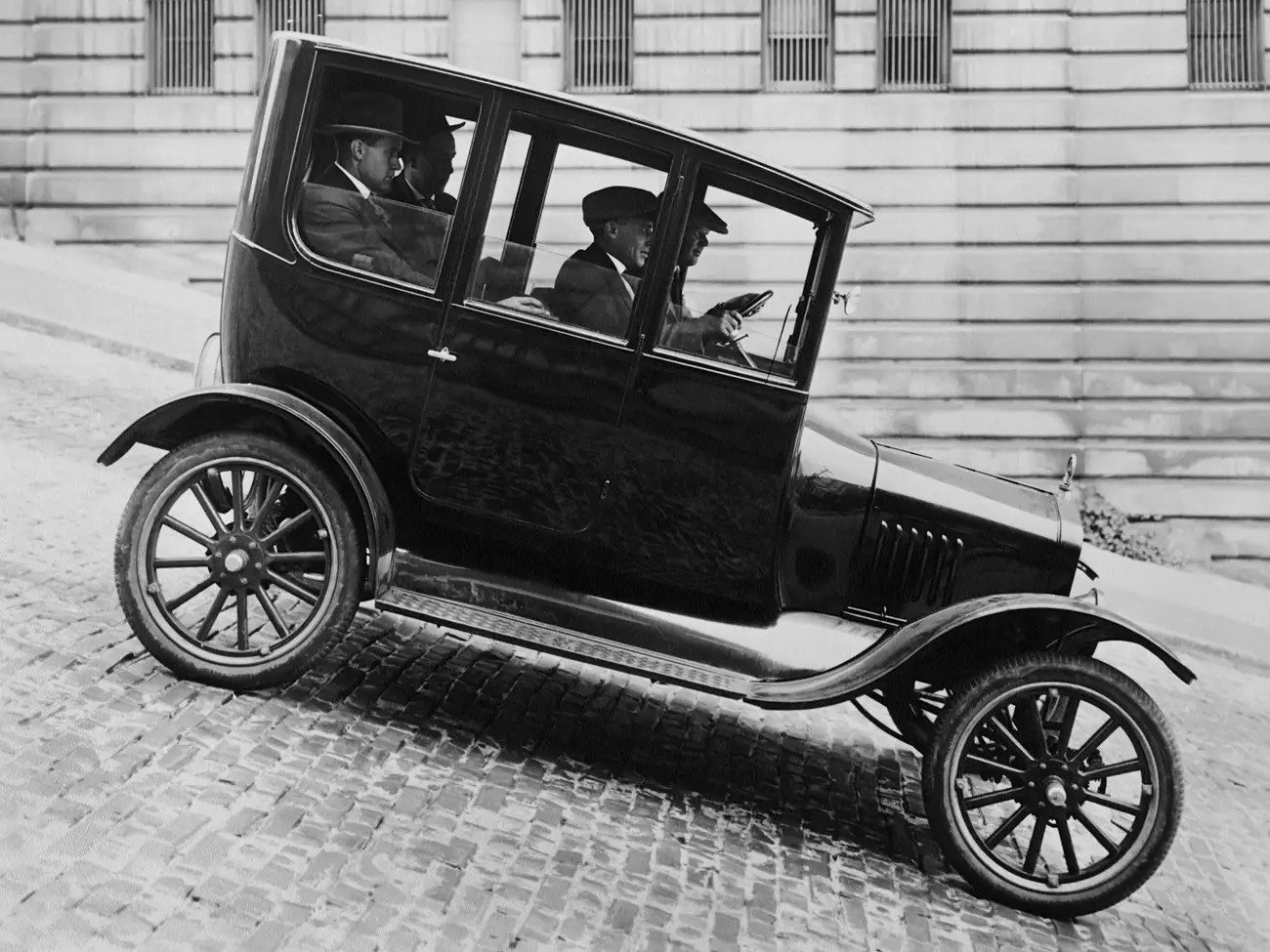
We forget how fast the world is changing today, and how slooooow innovation was just a century back.
In today’s blog, we’ll continue with our look back 100 years ago to help us truly appreciate how extraordinary our modern world is.
Let’s dive in…
The Impact of Technology 100 Years Ago
Today, we are so accustomed to the ubiquitous technologies seamlessly integrated into our daily lives, that we take most of them (unconsciously) for granted.
As the historian David Kyvig writes in his book Daily life in the United States, 1920-1940, “The nature of work, particularly in the industrial sector, was dramatically affected by electricity. As late as 1905 less than 10 percent of all motive power nationally was electrical, but thereafter usage grew so rapidly that by 1930 the figure reached 80 percent.”
Kyvig goes on to explain how electrification brought benefits to everyday life beyond work:
“One of the less apparent but most profound consequences of domestic electric lighting was the encouragement of reading at home. Increased reading broadened knowledge, stirred new interests, and created a more sophisticated society, especially away from centers of culture, which in turn increased demand for electricity. Persons who had trouble reading by dim fire or candlelight, and especially young children who could not be left alone to regulate gaslights, could easily and safely read by electric light. Partly for this reason, the Muncie, Indiana, public library loaned out eight times as many books per inhabitant in 1925 as it had in 1890. The cartoon symbol of a light bulb being switched on over someone's head as they achieved new insight was firmly grounded in reality.”
In fact, the positive effects of technological progress showed up in all corners of the economy—from transportation and communication to entertainment.
The Ford Model T, which cost around $300 in 1923, was still one of the most popular cars that year, a testament to the fact that Henry Ford's production methods had made automobiles affordable to a large portion of Americans. Though the invention of the car was not new, it was the democratization of it that changed the landscape of America, both literally and metaphorically, paving the way for the era of self-driving and electric cars that we see today.
In terms of communication, there were obviously no smartphones or internet. But with increased electrification (over 40% of Americans had electricity in their homes at the time), more and more people had access to a telephone. As of 1923, roughly 35% of Americans had one in their home.
The year 1923 was also marked by a turning point for entertainment. The film industry was booming, with Warner Bros. and Disney being founded that year. Americans, recovering from the aftermath of World War I, sought solace and entertainment in baseball, theatre, and movies, with about 50 million movie tickets sold each week, roughly half of the American population at the time. This was the infancy of the entertainment industry as we know it today. Silent films like The Ten Commandments by Cecil B. DeMille and The Hunchback of Notre Dame with Lon Chaney as Quasimodo captured the public's imagination.
At the same time, radio was just beginning to assert its influence. The first-ever live radio broadcast for a popular audience took place in 1920, and by 1923, radio was becoming a household fixture, offering news and entertainment right in the comfort of one's own home.
As a reference, let’s take a quick glance at America a century ago...
A Glance of America in 1923
-
Average wage: The average annual wage for manufacturing jobs in 1923 was around $1,400. This translates to about $27 per week.
-
Price of gas: The price of gasoline in 1923 was about $0.22 per gallon. Adjusted for inflation, this is equivalent to around $3.40 in today's dollars.
-
Penetration of electricity: The adoption of electricity varied greatly across the U.S. In urban areas, electricity was becoming common, but many rural areas were still without power. In the early 1920s, only about 40% of American homes were electrified, and the majority of farms still did not have electricity.
-
Telephone usage: Telephone service was expanding rapidly during the 1920s. By the mid-decade, approximately 35% of homes in the U.S. had a telephone.
-
Automobiles: In 1909, a Model T Touring car cost $850, but by 1924, the price had dropped dramatically to just $290 for a new Model T Runabout, making it accessible to a much larger portion of the population. Adjusted for inflation, $290 in 1924 is roughly equivalent to about $4,400 in 2023, which is significantly cheaper than most new cars today.
-
Cars on the Road: There were nearly 9 million registered motor vehicles in the U.S. in 1920. By 1925, that number had more than doubled to approximately 20 million, and by the end of the decade, there were over 23 million registered vehicles. In 2021, there were 278 million cars on American roads.
-
Radio: The first commercial radio station in the U.S., KDKA in Pittsburgh, began broadcasting in 1920. By the end of the decade, there were hundreds of radio stations across the country and millions of Americans owned radios.
Why This Matters
As you reflect on the state of technology in 1923, it’s safe to say that the speed of innovation has accelerated a ton over the last century.
But it’s not just about marveling at the transformation over a century—it’s about grasping the interconnectedness of each innovation, understanding how every single technological advancement laid the groundwork for the next.
The world of 1923 seems distant, yet it was pivotal in shaping the modern age.
From electrification to communication, each stride empowered humanity to dream bigger, bringing us to today's digitized era.
We are the beneficiaries of the courage and foresight of our predecessors. As we stand at the edge of another technological renaissance, we must remember: change doesn't just happen—it's built on a legacy.
Embracing this legacy, we can harness the lessons from 1923, combined with today's unparalleled tech advancements, to craft a brighter future for all.
In the next blog, we’ll look at the specific breakthrough innovations in 1922 and 1923.
My Playbook for Healthy Living
How I'm adding healthy years to my life...
I get a lot of questions about what I'm doing to extend my healthspan, so I wrote a book about it: Peter's Longevity Practices.
It's FREE and you can access it here: www.diamandis.com/longevity.
Everything is in there: diet, exercise, sleep, diagnostics, meds & supplements, and of course—mindset.
I discuss topics just like this on my podcast. Here’s a conversation I recently enjoyed:
A Statement From Peter:
My goal with this newsletter is to inspire leaders to play BIG. If that’s you, thank you for being here. If you know someone who can use this, please share it. Together, we can uplift humanity.
Topics: Abundance Entrepreneurship Abundance 360







